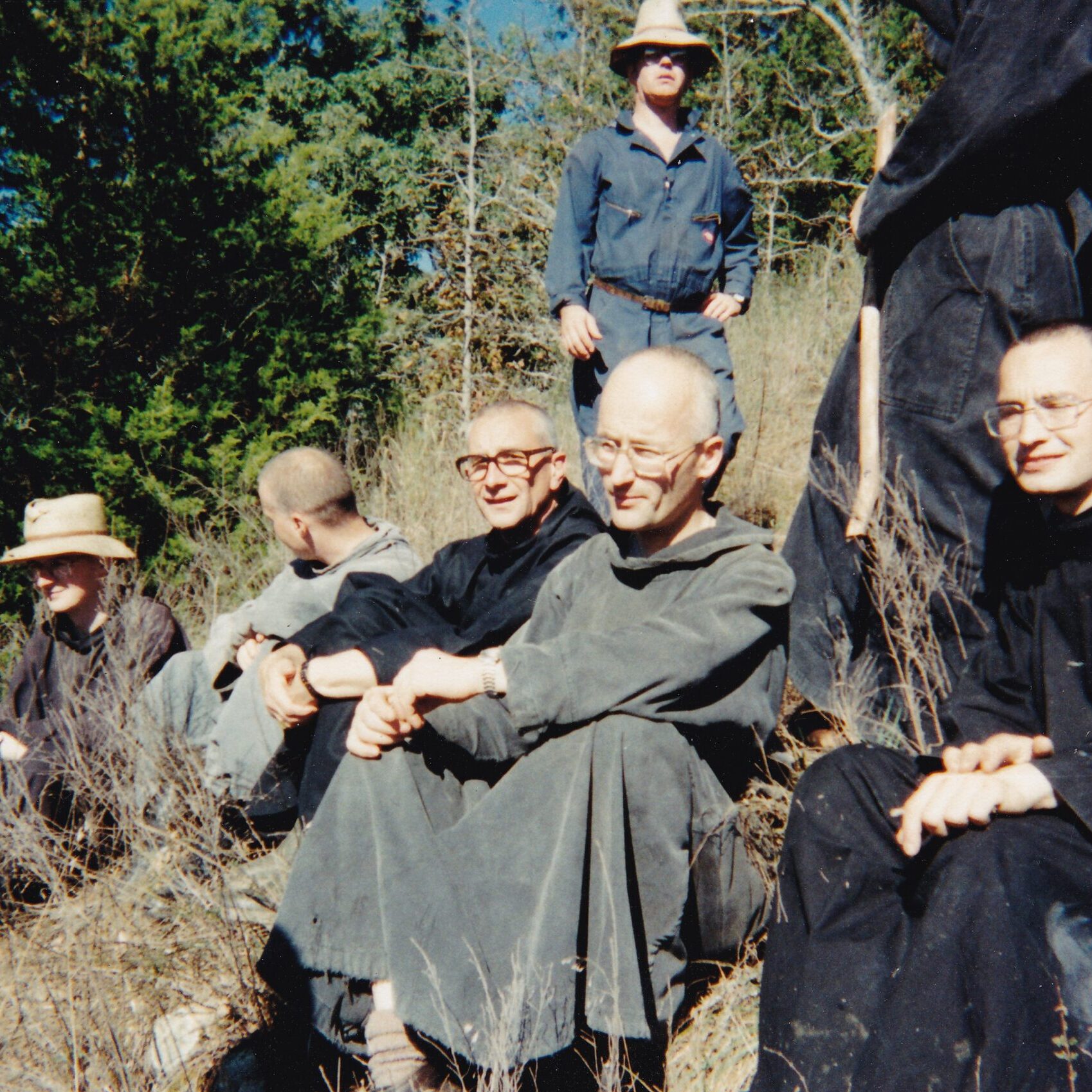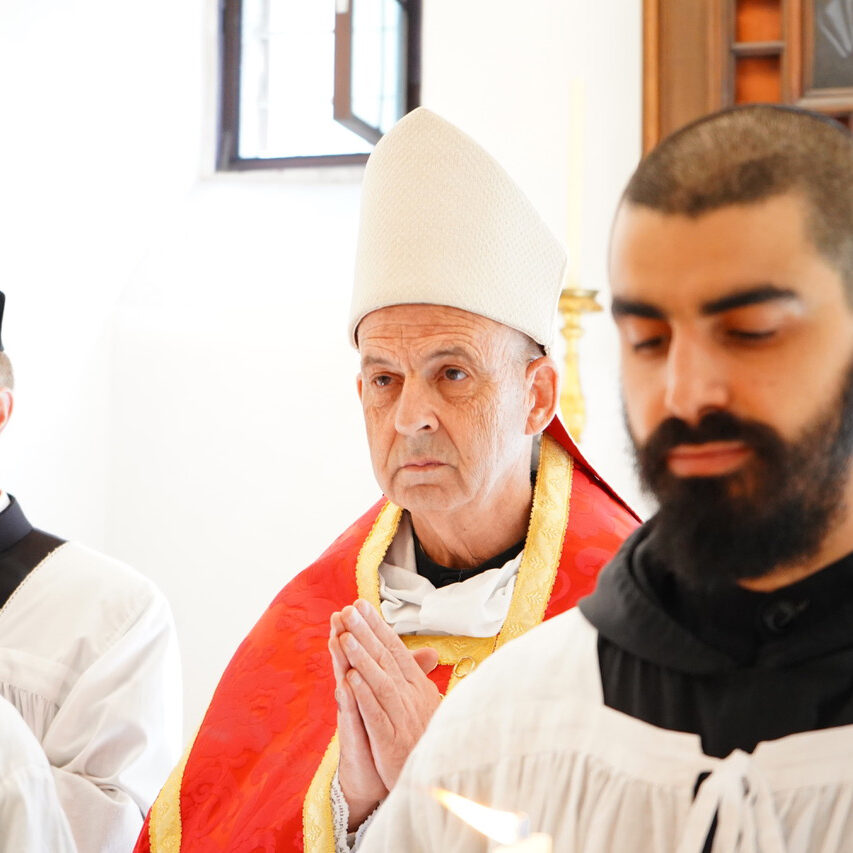Dear Friend of Clear Creek Abbey,
There was a time when life was ordered, not by the ringtone of your so-called smart phone, but according to the melodious and mysterious voice of the church bell. This is undoubtedly still the case in some places, although one may wonder how long it will take before even that voice is silenced. The English poet, Thomas Gray, begins his Elegy Written in a Country Churchyard with the evocation of the peaceful atmosphere that descends upon a village as the “curfew,” that is to say the church bell, announces the coming of night:
The curfew tolls the knell of parting day,
The lowing herd wind slowly o’er the lea,
The plowman homeward plods his weary way,
And leaves the world to darkness and to me.
In The Restoration of Christian Culture, John Senior notes that the perimeters of London parishes were once determined by the areas covered by the various steeple bells. “The ‘Cockney’ strictly speaking,” he writes, “is anyone living within the sound of the bell of St. Mary le Beau, one of the churches enumerated in the nursery rhyme, Oranges and lemons…” (p. 61).
More eloquent still are the words of the Roman ritual (quoting in translation the older ritual here) concerning the consecration of a church bell. We find here an especially powerful expression of the Catholic Christian faith together with the sense of confidence the people generally placed in the bell and in the grace attached to this brass instrument of liturgical praise:
Let the people’s faith and piety wax stronger whenever they hear its melodious peals. At its sound let all evil spirits be driven afar; let thunder and lightning, hail, and storm be banished; let the power of your hand [Lord] put down the evil powers of the air, causing them to tremble at the sound of this bell and to flee at the sight of the holy cross engraved thereon.
Whenever it rings, may the enemy of the good take flight, the Christian people hear the call to faith, the empire of Satan be terrified, your people be strengthened as they are called together in the Lord, and may the Holy Spirit be with them as He delighted to be with David when he played his harp.
This sort of language will be viewed by many as a mere flashback to days gone by. That will not do. Either we live in such a perspective—let’s call it Christian “realism”—or we might as well concede defeat in the great struggle of what has been called the “culture wars.” Actually, we are neither stuck in the past nor expect a utopian paradise somewhere beyond the vanishing point of history. We must simply fulfill the words of the Epistle to the Hebrews: “For we have not here a lasting city, but we seek one that is to come” (13:14). Our steady and even stubborn hope in the promise of the bells will someday lift us up to a higher vantage point and open the clouds above to reveal the City of God itself.
The monks of Clear Creek already possess three magnificent brass bells, made by one of the best bell makers in the world. They were consecrated in France and sent on a ship across the Atlantic. Their names in Latin are Maria Joanna Paula (her note on the musical scale is D); Michaela (she is an F); and Benedicta Bernarda (a G). An American expert in bells, after seeing the three brass beauties we have at Clear Creek, declared to me that they are high quality bells, “the Cadillac of bells.”
Sadly, however, our bells remain earth-bound! Their song does, indeed, soar toward Heaven, but not as it should, not from a proper bell tower, from a high steeple. The blessed pealing of bells, announcing the mystical Hours of the Divine Office and especially Holy Mass, cannot thus properly ring out across the countryside to call monks and all Christians to the church. In order to remedy this situation we are preparing to start construction again at the abbey, focusing this time on the bell tower. Our previous phase of work dealt with what is called in French the chevet, which is the eastern-most portion of the church including the sanctuary. That phase included the lower portion of the tower but stopped at mid-height. This new phase will serve to complete the tower, inside and out, to place the bells in their steeple, and to complete the vaults and finishes inside that portion of the church. It will be an impressive step toward the completion of this church construction so important for the life of Our Lady of Clear Creek Abbey, all for the glory of God and the honor of Our Lady of the Annunciation.
As in the past, we count on your assistance in meeting this challenge, whether in prayers (especially to Our Lady and to the good Saint Joseph) or in material gifts. Our concern is never simply that of “fundraising” for its own sake but rather that of the spiritual and material growth of our monastery in accordance with its vocation. We thank you in advance for the small sacrifices and efforts you might make in our favor. May God bless you, and may Our Lady of the Annunciation surround you with her immaculate beauty and light.
+ br. Philip Anderson, abbot
Dear Friend of Clear Creek Abbey,
There was a time when life was ordered, not by the ringtone of your so-called smart phone, but according to the melodious and mysterious voice of the church bell. This is undoubtedly still the case in some places, although one may wonder how long it will take before even that voice is silenced. The English poet, Thomas Gray, begins his Elegy Written in a Country Churchyard with the evocation of the peaceful atmosphere that descends upon a village as the “curfew,” that is to say the church bell, announces the coming of night:
The curfew tolls the knell of parting day,
The lowing herd wind slowly o’er the lea,
The plowman homeward plods his weary way,
And leaves the world to darkness and to me.
In The Restoration of Christian Culture, John Senior notes that the perimeters of London parishes were once determined by the areas covered by the various steeple bells. “The ‘Cockney’ strictly speaking,” he writes, “is anyone living within the sound of the bell of St. Mary le Beau, one of the churches enumerated in the nursery rhyme, Oranges and lemons…” (p. 61).
More eloquent still are the words of the Roman ritual (quoting in translation the older ritual here) concerning the consecration of a church bell. We find here an especially powerful expression of the Catholic Christian faith together with the sense of confidence the people generally placed in the bell and in the grace attached to this brass instrument of liturgical praise:
Let the people’s faith and piety wax stronger whenever they hear its melodious peals. At its sound let all evil spirits be driven afar; let thunder and lightning, hail, and storm be banished; let the power of your hand [Lord] put down the evil powers of the air, causing them to tremble at the sound of this bell and to flee at the sight of the holy cross engraved thereon.
Whenever it rings, may the enemy of the good take flight, the Christian people hear the call to faith, the empire of Satan be terrified, your people be strengthened as they are called together in the Lord, and may the Holy Spirit be with them as He delighted to be with David when he played his harp.
This sort of language will be viewed by many as a mere flashback to days gone by. That will not do. Either we live in such a perspective—let’s call it Christian “realism”—or we might as well concede defeat in the great struggle of what has been called the “culture wars.” Actually, we are neither stuck in the past nor expect a utopian paradise somewhere beyond the vanishing point of history. We must simply fulfill the words of the Epistle to the Hebrews: “For we have not here a lasting city, but we seek one that is to come” (13:14). Our steady and even stubborn hope in the promise of the bells will someday lift us up to a higher vantage point and open the clouds above to reveal the City of God itself.
The monks of Clear Creek already possess three magnificent brass bells, made by one of the best bell makers in the world. They were consecrated in France and sent on a ship across the Atlantic. Their names in Latin are Maria Joanna Paula (her note on the musical scale is D); Michaela (she is an F); and Benedicta Bernarda (a G). An American expert in bells, after seeing the three brass beauties we have at Clear Creek, declared to me that they are high quality bells, “the Cadillac of bells.”
Sadly, however, our bells remain earth-bound! Their song does, indeed, soar toward Heaven, but not as it should, not from a proper bell tower, from a high steeple. The blessed pealing of bells, announcing the mystical Hours of the Divine Office and especially Holy Mass, cannot thus properly ring out across the countryside to call monks and all Christians to the church. In order to remedy this situation we are preparing to start construction again at the abbey, focusing this time on the bell tower. Our previous phase of work dealt with what is called in French the chevet, which is the eastern-most portion of the church including the sanctuary. That phase included the lower portion of the tower but stopped at mid-height. This new phase will serve to complete the tower, inside and out, to place the bells in their steeple, and to complete the vaults and finishes inside that portion of the church. It will be an impressive step toward the completion of this church construction so important for the life of Our Lady of Clear Creek Abbey, all for the glory of God and the honor of Our Lady of the Annunciation.
As in the past, we count on your assistance in meeting this challenge, whether in prayers (especially to Our Lady and to the good Saint Joseph) or in material gifts. Our concern is never simply that of “fundraising” for its own sake but rather that of the spiritual and material growth of our monastery in accordance with its vocation. We thank you in advance for the small sacrifices and efforts you might make in our favor. May God bless you, and may Our Lady of the Annunciation surround you with her immaculate beauty and light.
+ br. Philip Anderson, abbot






